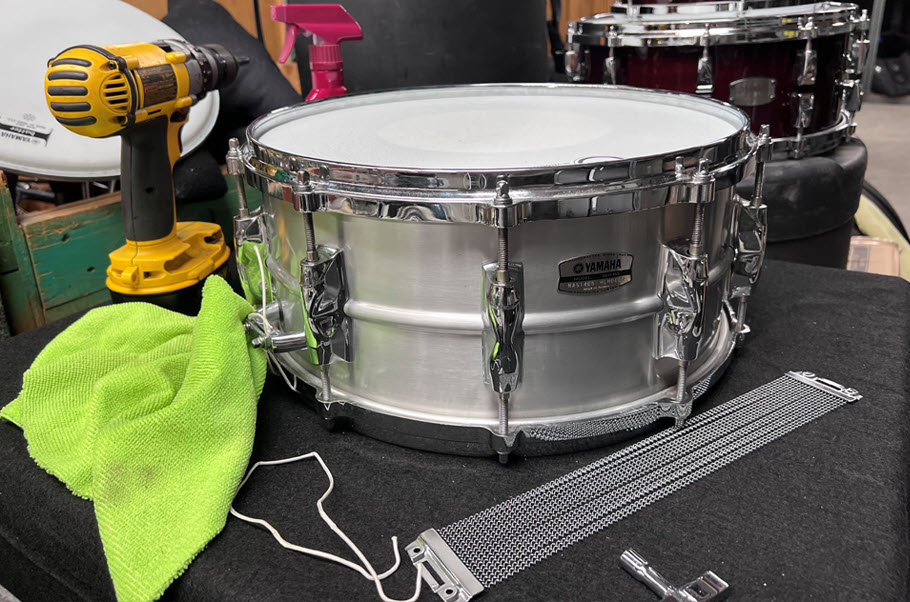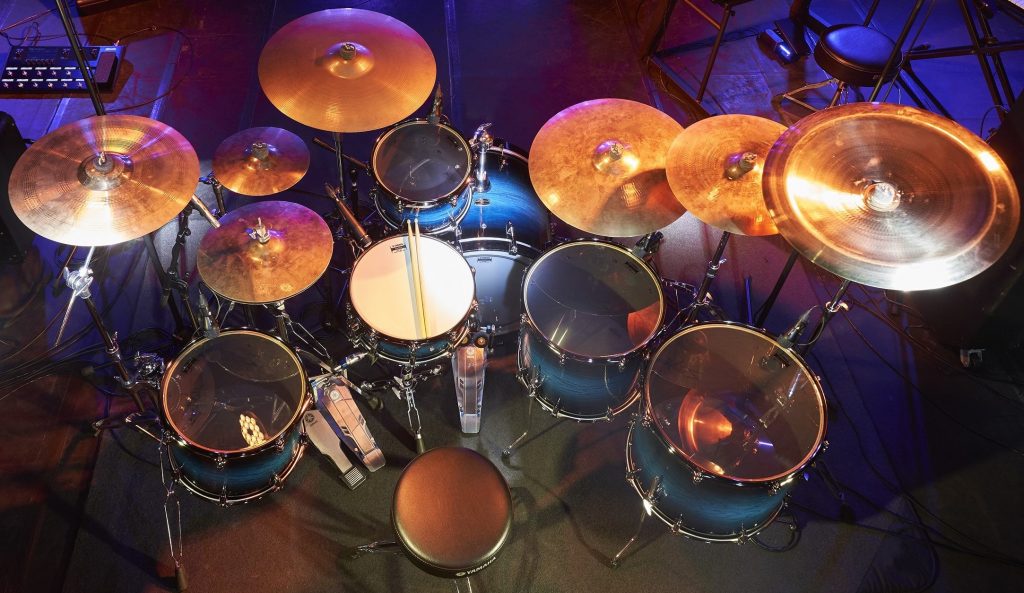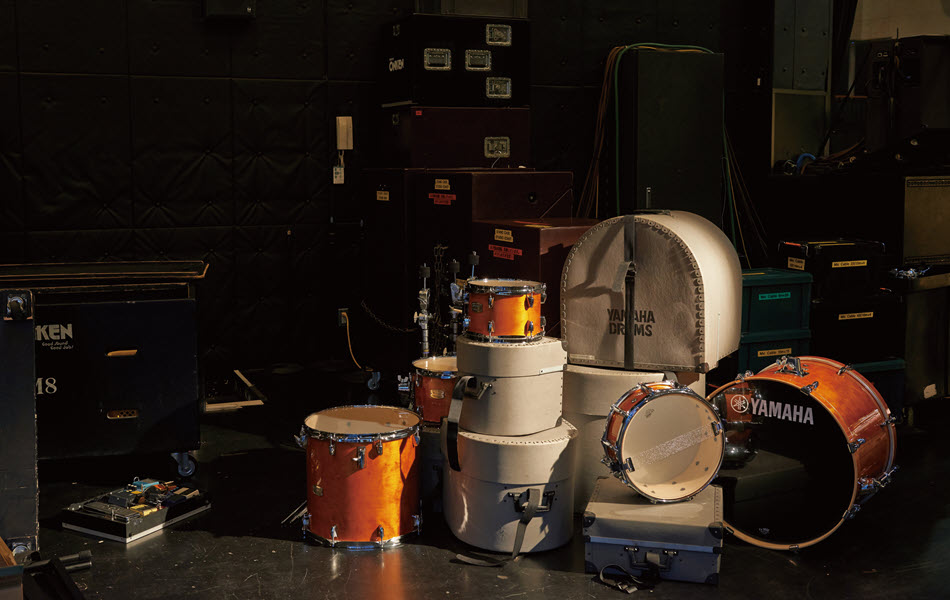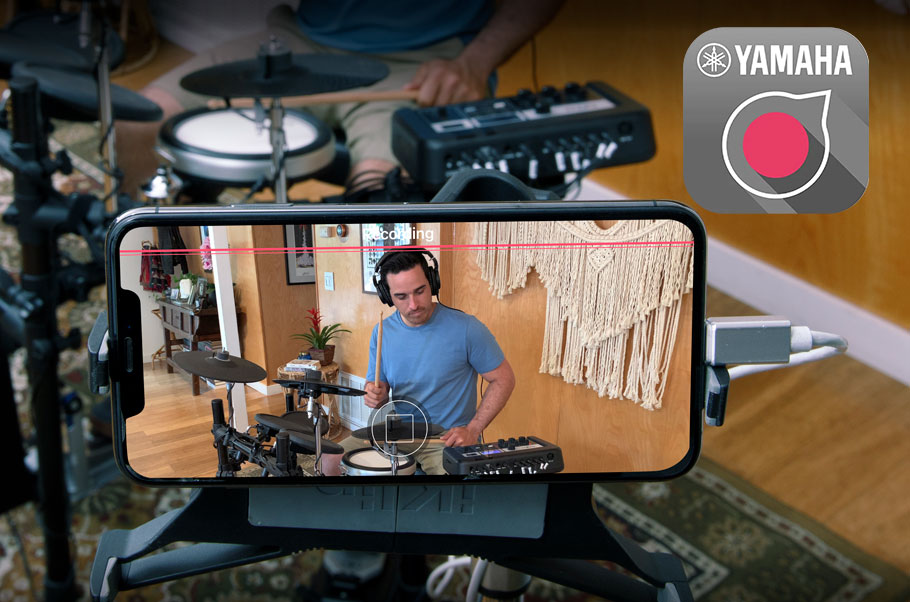Tagged Under:
Buying Your First Drum Set
Here’s what you need to know before you start shopping.
You’ve always wanted to play drums. Or perhaps your child or grandchild has expressed an interest in (and perhaps shown an aptitude for) playing drums and you want to encourage them. Either way, you’re a bit conflicted about it.
On the one hand, you feel ready to indulge yourself (and of course you’re always ready to indulge your kids and grandkids!), but on the other you think it’s going to be a noisy and costly activity. In addition, there’s the intimidation factor: Some folks find the prospect of buying a drum set both time-consuming and confusing, especially if they’re not familiar with the jargon and don’t know what to ask for.
The good news is that none of these things are necessarily true. Drums today can be almost completely silent, and they can be affordable, too. What’s more, thanks to online resources (like this blog!), navigating the maze of options is easier than ever before. Here’s what you need to know before you start shopping for that first drum set:
What is a Drum Set, Anyway?
A drum set (sometimes called a drum “kit”) is simply a collection of drums, cymbals and mounting hardware, similar to those you’ve seen played onstage by your favorite band. There are two kinds of drum sets: acoustic and electronic.
An acoustic drum set is made up of the following five basic components:
1. Drums: There are typically at least four or five drums in a set. Each consists of a shell (typically made of wood, but also sometimes metal), across which is stretched a drum skin or “head” (usually made of clear plastic Mylar® or calfskin) — the surface you hit with a stick. The drums that are used most of the time are the bass (“kick”) drum and snare drum, though most drum sets also include one or more tom-toms.
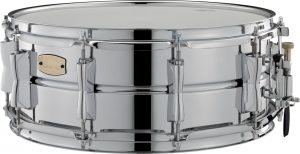
2. Cymbals: Circular plates made of metal, used for a crashing sound. The most important of these are a hi-hat (two small cymbals mounted vertically, one inverted, that come in contact with one another when a pedal is pressed) and a “ride” cymbal. A starter drum set may also include one or more “crash” cymbals.
3. Hardware: Metal stands to hold the cymbals and drums, plus a throne (seat), a foot pedal (for the bass drum) and a hi-hat stand that includes a pedal for crashing the two cymbals together.
4. Sticks: Long wooden dowels used to strike the drums and cymbals.
5. Drum key: A small metal device used to tune the drums by stretching their skins.
In electronic drum kits, the sounds are produced via electronic, not acoustic means, so pads made of rubber, Textured Cellular Silicone (TCS) or mesh material are struck instead of physical drums and cymbals. Electronic drum kits also include a module (a “brain”) in which hundreds of different sounds are stored digitally.
Acoustic Drums or Electronic Drums?
When deciding which kind of drums to buy, one of the most important factors is the space required. In addition, you will want to consider the time of day you or your child will be practicing — will this disrupt your other family members or the neighbors?
Acoustic drum sets are much louder than electronic drums, have a much larger footprint and will require some sort of isolated room for practice.

Electronic kits are smaller, quieter and easier to use since you don’t have to worry about tuning or changing drum heads. An electronic drum kit like the Yamaha DTX6 Series or DTX402 Series is often the best choice for beginners since you won’t need to soundproof the room where they are located — you or your child can use headphones to practice. Another big advantage to electronic drums are the built-in training functions they often provide. These allow an aspiring musician to improve the critical skills of timing and feel. This can include built-in songs the student can play along to, making training and practice more fun — and therefore ultimately more successful.
The Advantages and Disadvantages of Each
Acoustic drums:
- The standard for both lessons and live performance.
- Loud!
- Take them anywhere: not tethered to a power outlet.
- Instant gratification: nothing to plug in or set up. Just start hitting ’em!
- Good for larger bedrooms, basements or garage … especially if the spaces can be soundproofed.
- Produce one sound with various tunings.
- Drums and cymbals come in various sizes.
- Larger footprint: requires an average 5′ x 5′ space.
- Requires lots of new sticks and drum heads as they wear.
Electronic drums:
- Easily used at home but requires amplification for performance.
- Quiet practice with headphones.
- Good for apartments or small bedrooms.
- Capable of producing various sounds and styles of drum kits.
- Requires some setup and an electrical outlet.
- Pads for drums and cymbals are typically smaller than their acoustic counterparts.
- Smaller footprint: requires only an average 4′ x 4′ space.
- Built-in training functions and metronome.
- Less stick wear.
- Heads don’t wear down and need replacement unless the kit uses mesh heads. (Yamaha offers replacements for these.)
Things to Look for in an Acoustic Drum Set
1. Mass: A good drum has some weight and feels sturdy. If the drum feels light, the metal and shell is of lower quality. While such drums are not necessarily bad, they are typically harder to tune and tend to need to be replaced sooner.
2. Expandability: If your skills and/or enthusiasm (or that of your young drummer) grows in future, make sure you can add extra components and order individual drums in the same color as your current set. Ask what sizes might be available.
3. Substantial features for your investment: Good drums, heads and hardware can cost a bit more, but they will also retain their value and make it easier to trade up when you or your child are ready.
Things to Avoid in an Acoustic Drum Set
1. Metal corrosion and poor workmanship: Examine the drum shell inside and out. Pay attention to the appearance of the seams. Are they well-crafted and without flaws? Is the finish smooth, with no “bubbling”? If the work is sloppy, chances are you’ll spend more time repairing or replacing things than actually playing the drums.
2. A manufacturer that doesn’t stand behind their instruments: Research drum brands ahead of time. Look for those that have gotten good reviews from users and/or impartial journalists. Lofty features and marketing claims are hard to substantiate without reviews! Things can break and get worn, but quality endures and is reflected in the way the manufacturer is perceived in the marketplace.
Things to Look for in an Electronic Drum Kit
1. Sounds: There’s usually a direct relationship between the price of a module (the central “brain” of an electronic drum kit) and the quality and variety of sounds it offers. Top-notch modules include all the standard drum sounds you would expect, but also offer many other sounds such as bells, wood blocks and non-percussion instruments, as well as special effects. High-end modules also provide the ability to edit and create your own sounds, and in some cases, allow you to download your own samples. Modules with editing and download capabilities can cultivate creativity!
2. Preset patterns: Every module has a selection of preset patterns — typically, short two-bar phrases or drum parts related to specific drum kits or musical styles. As mentioned earlier, these can be valuable learning tools, as well as a source of inspiration in creating your own unique drum parts. Many modules include full play-along tracks for both fun and practice.
3. Connectivity and expansion: If you plan to expand your electronic kit with more pads and triggers in the future, be sure the module has enough connectors to allow this. A USB port lets you send MIDI data to external PCs, digital audio interfaces and workstations, giving you access to a wide range of music software. Inputs for connecting multiple types of audio players (such as smartphones, tablets and CD players) let you practice and play along with your favorite music. Multiple outputs that can send your performance simultaneously to a mixer and recorder can be useful in both live and studio settings. In addition, be sure that the outputs will support the type of amplification system you plan to use.
4. Apps, apps and more apps: Speaking of connectivity, ancillary mobile apps can make any electronic drum kit easier to use, which makes learning faster and playing more fun. That’s why it’s important to choose an electronic kit that’s compatible with as many apps as possible. Yamaha has developed several free apps for DTX402, DTX6, DTX8 and DTX10 Series electronic drum kits and DTX-MULTI 12 electronic percussion pads. In addition, specialty apps like Yamaha Rec’n’Share can be used to capture the audio from any of those kits or an EAD10 electronic acoustic drum module and combine it with video taken with a smart device. The user can then download their performance and share it on social media, or send it to friends in a text or email. Want to learn more? Read our blog “Three Ways That Apps Can Help Your Electronic Drumming.”
5. A module “head” that is simple to use and sounds good: It should also allow you to download new kits and customize existing kits with fresh sounds and capabilities. There’s no better way to stay engaged!
6. Pads that are sturdy and have a good feel when played: There are several types of drum and cymbal pads available. When choosing, look for a good feel that pairs well with the sounds of the module. You can have a very good pad and an average module — or vice versa. Rubber pads are generally used in less expensive starter electronic drum kits, although some may offer mesh or foam. The pads you choose should have some give, but not too much rebound or bounce.
7. A rack that has sufficient weight to keep things in place yet is easy to adjust: The mounting hardware of your electronic drum kit should make it easy to keep components in place, using a standard drum key or knobs that stay tight.
8. Durability: Anything you hit with a stick should have some mass — and should feel sturdy.
Things to Avoid in an Electronic Drum Kit
1. A module with significant limitations: If it doesn’t allow you to personalize the feel of the kit or limits the number of pads you can add (due to only a few or single-zone inputs), keep looking.
2. A module that has poor sounds: Unlike acoustic drums, you can’t fix the sounds of an electronic drum kit with well-placed tape or muffling.
3. Pads that feel too hard: This can cause fatigue.
4. Pads that feel flimsy: Typically, these will not hold up under normal playing conditions — especially at the hands of a child.
5. Pads that are too bouncy: These can make transitioning to an acoustic drum set difficult.
Cost Versus Quality
Whether you’re shopping for acoustic or electronic drums, you’ll find that the market is full of affordable options. But remember, you or your child will be physically hitting the drums and many cheaper kits will fail over time due to heavy use, so make sure you look for a drum set that is robust, even if it costs a little extra. In addition, more expensive electronic drum kits feel more realistic and offer larger playing surfaces similar in size to those found in an acoustic drum set. Whichever way you go, starting with good quality instruments will make the experience more enjoyable — and can save you money down the road.
For more information, check out our three-part blog series, “So Your Child Wants to Learn to Play Drums”:
Click here for Part 1
Click here for Part 2
Click here for Part 3
Click here for more information about Yamaha drums.










